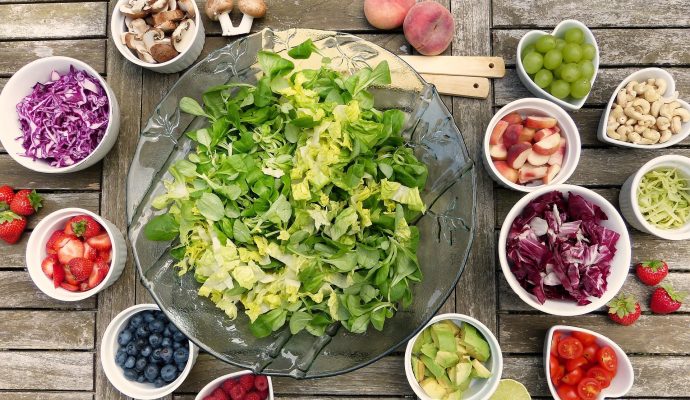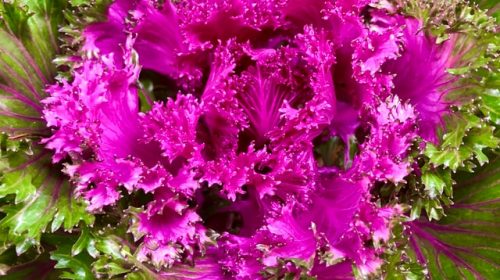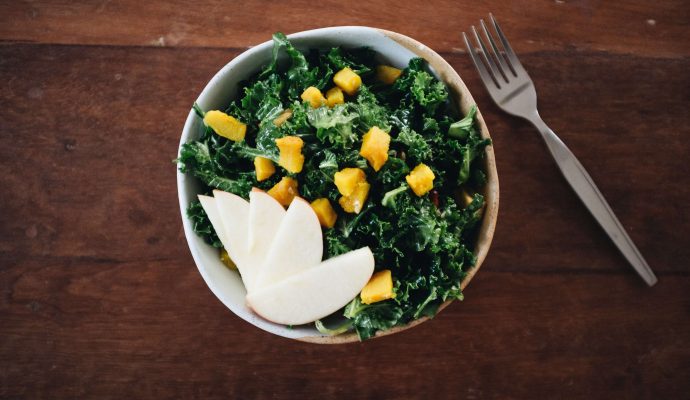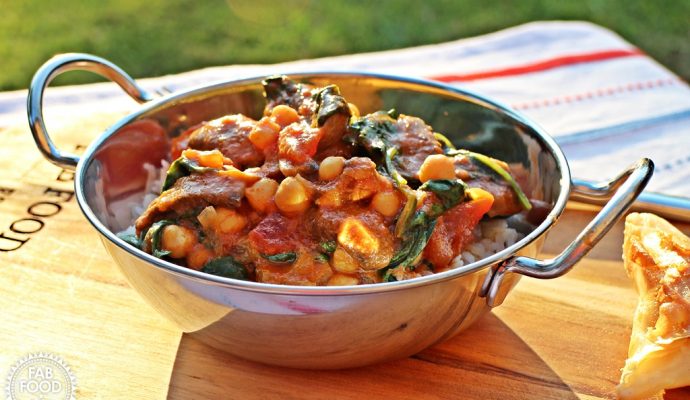Being vegan is really fashionable right now, and those in favour of this way of eating will tell you that it’s the absolutely healthiest diet you can have from a nutritional perspective, plus you get to save not only the lives of animals but the planet too. For many of us it could be a bit challenging to go from where we are now to a 100% vegan diet.
So, I’m going to put it all out there for you: what it means to be vegan, what’s great about it, potential drawbacks and where you might struggle – and I’ll also be giving you tips for getting started, whether your intention is to immerse yourself fully or if you just fancy dabbling (either is fine – just saying).
WHAT IS A VEGAN DIET?
A vegan diet is a stricter version of a vegetarian diet. So in addition to not eating any meat, fish or seafood – i.e. dead animals, a vegan diet also cuts out any food stuffs made from animal sources (some of which are the most nutrient-dense foods you can eat). So, not just cutting out chicken meat, but also cutting out eggs. In the same vein, not just cutting out beef but also milk, yoghurt, butter and cream. And that means honey, too, as well as certain wines* and desserts (gelatine).
In a nutshell, vegan diets abstain from ALL animal products and consume only plant-based foods which means NO meat, fish, eggs or dairy.
There is no set macro of micro nutrient ratio for a vegan diet; just vegetables, grains, fruit, nuts, seeds and any other foods made from plants. However, since the main vegan protein sources are pulses and grains, and only a combination of the two provides complete proteins (containing all the amino acids), by definition this can be a high carbohydrate diet.
* If you’re wondering ‘why is wine not vegan?’ Here’s the answer…all young wines are a little bit cloudy thanks to tiny molecules like proteins, tartrates, tannins and phenolics. These are completely harmless, but we wine-drinkers like our wines to be clear and bright. To make the wines clear, wine makers have traditionally used some added ingredients called ‘fining agents’ to help the process along. They include casein (milk protein) or albumin (egg whites), gelatine (animal protein) or isinglass (fish bladder protein). They act like a magnet, resulting in far fewer – but larger – particles that are more easily removed.
Advantages Of Going Vegan
- Cruelty-free
- Promotes natural foods
- Rich in vitamin C, fibre, antioxidants and other plant chemicals
- Helpful for some health conditions (rheumatoid arthritis, multiple sclerosis, other auto-immune conditions).
Potential Challenges In Going Vegan
- Natural food is not a requirement to comply with the diet

- Does not explicitly encourage healthy eating patterns
- May be nutrient deficient (B12, haem iron, omega-3 fats, complete protein)
- Often high in carbohydrates which can lead to weight management issues
- Can be too low in protein, which could be problematic if you’re stressed or recovering from adrenal fatigue
- Does not limit or exclude sugar
- Not suitable for elderly, pregnant women, type 2 diabetics, or those with high triglycerides or carbohydrate intolerance
- Not always practical, especially when travelling abroad
- May or may not be effective for weight loss
IS BEING VEGAN HEALTHY?
Good question! There have been various well-publicised assertions over the years (most notably the book The China Study and, more recently, the film What the Health) that claimed eating a vegan diet was the healthiest thing you could do. A vegan diet, when carefully planned and executed, can be healthy for many people — however, it’s not always a good idea for everyone nor does it automatically mean it’s a healthy diet. And it depends whether you do it short or long-term.
Some studies have found that compared to lacto-ovo-vegetarian diets (those who eat eggs and dairy but not meat), vegan diets seem to offer additional protection for obesity, hypertension, type 2 diabetes and cardiovascular mortality. On the other hand, studies also show that there are some nutrient deficiencies that tend to be higher among vegans, especially those consuming processed diets or struggling with other health conditions that interfere with normal nutrient absorption (like anaemia, or being underweight).
Although vegans commonly take an interest in how diet relates to health and tend to educate themselves about nutrition, the vegan diet does not explicitly prescribe healthy foods. There is a vegan alternative for every junk food out there. And you can live on white toast with margarine and jam (and see your blood sugar levels sky rocket) while still being vegan – and that is certainly not healthy.
Given that the vast majority of health complaints are linked to chronic inflammation, a plant-focussed, antioxidant-rich vegan diet plays an important part in mediating inflammation, and it will certainly not hinder your attempts to become more healthy. Plus, given we don’t eat nearly as much fibre as we should for optimum health, committing to eating more plant foods is only going to be a good thing.
But, it may not provide sufficient nutrients for combatting certain conditions, notably auto-immune conditions where inflammation is at the root cause- here the addition of fish and eggs would better support the immune system.
Compromise….? Because a vegan diet can be both hard to follow long-term and is also potentially problematic, some people prefer to stick with a “flexitarian” approach instead which involves eating fewer animal products. For example, you might not consider yourself a vegan or even a vegetarian, but you can still make a conscious effort to limit your intake of animal products, focusing on eating plant foods the majority of the time. With this flexible approach you might still choose to have animal products several times per week but probably not every single day.
Things To Be Mindful Of On A Vegan Diet
- Vegan diets don’t provide the fat-soluble vitamins A and D. You can’t get vitamin A from carrots. What you get is beta carotene, which is the precursor to vitamin A.
- You may have heard that carotene can be converted into vitamin A, but this conversion is usually insignificant.
- Firstly, it takes a huge amount of carotene to convert into a small amount of vitamin A.
- And, if you have low thyroid function, impaired digestion or a lack of healthy fats in the diet, this conversion won’t happen at all.
- Vegan diets (unless you’re eating a lot of natto – a kind of fermented soy) don’t give you the vitamin K2. This is needed for shuttling calcium into your bones.
- Many people try to be vegan by relying on fake food – they replace milk, cheese and meat with foods manufactured to look and taste as though they are milk, cheese and meat. What is used is non-foodstuffs, including stabilisers, gums, thickeners and highly processed protein extracts. Moreover, you may be counting your vegan cheese in as a source of protein, when many of them are actually made from carbs or fats.
- Vegan diets can be low in protein– proteins are broken down into amino acids. Amino acids are the building blocks of muscle and are important for cellular health, proper metabolism and the immune system. Too little protein can contribute to muscle wasting, cognitive changes, mood swings, low energy and a weakened immune system.
- Vegan diets are low on vitamin B12 and iron. The readily-absorbed forms of these nutrients are found in animal products. Several studies suggest that up to 68% of vegans are deficient in vitamin B12.
- Several studies have shown that both vegetarians and vegans are also prone to deficiencies in calcium, iron, zinc, and essential fats like omega 3 (fats which can’t be made by the body but need to be obtained from food- or supplements) which are readily- absorbed only from oily fish.
HOW TO GET STARTED ON A VEGAN DIET
Some people like to make changes all in one go. If this is you, choosing a vegan recipe book from the resources I’ve listed below will be helpful.
Or you might try changing one meal at a time – possible having a vegan breakfast during your first week, adding a vegan lunch during week two and so on.
You might try changing one product at a time, for example, swapping traditional cow’s milk for almond milk, or butter for coconut oil. There’s a plant-based alternative for most things you can think of.
One thing that you can look forward to is some exciting new recipes. Bringing vegan principles into your life even a few days a week (assuming we are talking veg-based meals rather than fake or junk foods) will deliver a whole new taste experience. There will be things that you love – and things the family rejects. It’s all part of the fun of discovering new things.
RESOURCES – BEST VEGAN BLOGS
The Colourful Kitchen www.thecolorfulkitchen.com
Deliciously Ella www.deliciouslyella.com
Minimalist Baker www.minimalistbaker.com
Oh She Glows www.ohsheglows.com
The Vegan Woman www.theveganwoman.com
RESOURCES – VEGAN RECIPE BOOKS
Christine Bailey, Go Lean Vegan: The Revolutionary 30-day Diet Plan to Lose Weight and Feel Great
Hugh, Fearnley-Whittingstall, River Cottage Much More Veg: 175 easy and delicious vegan recipes for every meal
Angela Liddon, Oh She Glows
Angela Liddon, Oh She Glows Everyday
Ella Mills (Woodward), Deliciously Ella
Ella Mills (Woodward), Deliciously Ella The Plant-Based Cookbook: 100 simple vegan recipes to make every day delicious
 This delicious recipe uses flavours from Thailand, in whose cuisine coconut, ginger, and lime can often be found. Coconut milk helps increase the bioavailability of kale’s fat-soluble vitamins, while coconut’s sweetness and the brightness of the lime help eliminate kale’s natural bitterness. You could also use oat cream instead of coconut milk.
This delicious recipe uses flavours from Thailand, in whose cuisine coconut, ginger, and lime can often be found. Coconut milk helps increase the bioavailability of kale’s fat-soluble vitamins, while coconut’s sweetness and the brightness of the lime help eliminate kale’s natural bitterness. You could also use oat cream instead of coconut milk.


